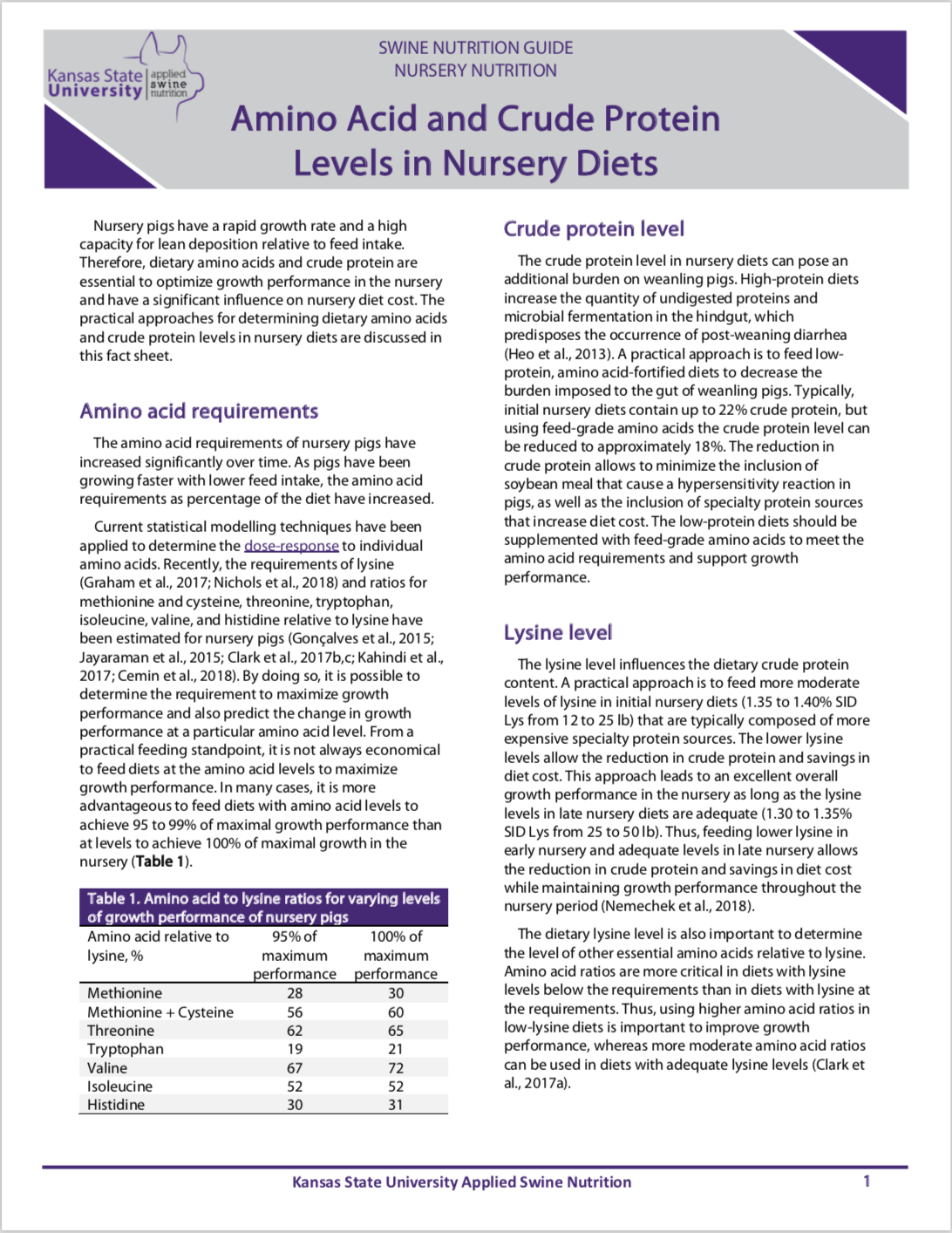Feed-grade amino acids in nursery diets
The use of feed-grade amino acids is key to meeting the amino acid requirements of nursery pigs, with accompanying reduction in dietary crude protein and savings in diet cost. The replacement of intact protein sources by feed-grade amino acids increases as feed-grade amino acids become available and economically justifiable. Currently, feed-grade lysine, methionine, threonine, tryptophan, and valine are all economical to include in nursery diets in the United States.
The maximum inclusion of feed-grade amino acids is often dictated by the ratio of lysine to crude protein and by the most limiting amino acid in the diet. Lysine to crude protein ratio is used to ensure a sufficient supply of nitrogen for synthesis of non-essential amino acids in low-protein, amino acid-fortified diets. For nursery pigs, up to a ratio of SID Lys:CP of 6.35 or total Lys:CP of 7.20 is recommended (Millet et al., 2018a,b). Also, the inclusion of feed-grade amino acids is determined by the next limiting amino acid in the diet, which can be isoleucine or histidine when all five first-limiting amino acids are available for feed-grade inclusion. However, low-protein diets fortified with the five first-limiting amino acids are typically able to meet the histidine requirements for nursery pigs (Cemin et al., 2018).
